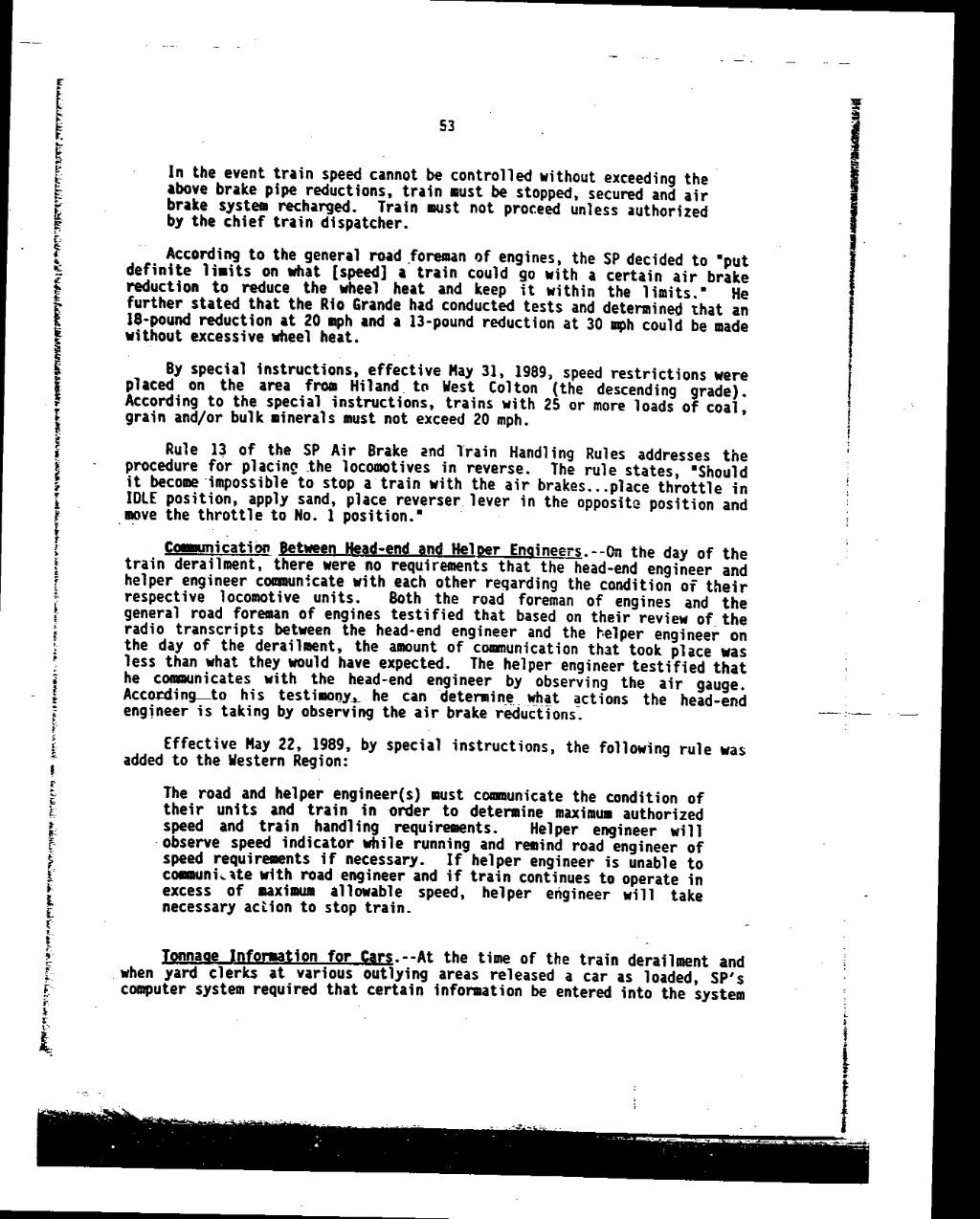53
In the event train speed cannot be controlled without exceeding the above brake pipe reductions, train must be stopped, secured and air brake system recharged. Train must not proceed unless authorized by the chief train dispatcher.
According to the general road foreman of engines, the SP decided to "put definite limits on what [speed] a train could go with a certain air brake reduction to reduce the wheel heat and keep it within the limits." He further stated that the Rio Grande had conducted tests and determined that an 18-pound reduction at 20 mph and a 13-pound reduction at 30 mph could be made without excessive wheel heat.
By special instructions, effective May 31, 1989, speed restrictions were placed on the area from Hiland to West Colton (the descending grade). According to the special instructions, trains with 25 or more loads of coal, grain and/or bulk minerals must not exceed 20 mph.
Rule 13 of the SP Air Brake and Train Handling Rules addresses the procedure for placing the locomotives in reverse. The rule states, "Should it become impossible to stop a train with the air brakes…place throttle in IDLE position, apply sand, place reverser lever in the opposite position and move the throttle to No. 1 position."
Communication Between Head-end and Helper Engineers.—On the day of the train derailment, there were no requirements that the head-end engineer and helper engineer communicate with each other regarding the condition of their respective locomotive units. Both the road foreman of engines and the general road foreman of engines testified that based on their review of the radio transcripts between the head-end engineer and the helper engineer on the day of the derailment, the amount of communication that took place was less than what they would have expected. The helper engineer testified that he communicates with the head-end engineer by observing the air gauge. According to his testimony, he can determine what actions the head-end engineer is taking by observing the air brake reductions.
Effective May 22, 1989, by special instructions, the following rule was added to the Western Region:
The road and helper engineer(s) must communicate the condition of their units and train in order to determine maximum authorized speed and train handling requirements. Helper engineer will observe speed indicator while running and remind road engineer of speed requirements if necessary. If helper engineer is unable to communicate with road engineer and if train continues to operate in excess of maximum allowable speed, helper engineer will take necessary action to stop train.
Tonnage Information for Cars.—At the time of the train derailment and when yard clerks at various outlying areas released a car as loaded, SP’s computer system required that certain information be entered into the system
